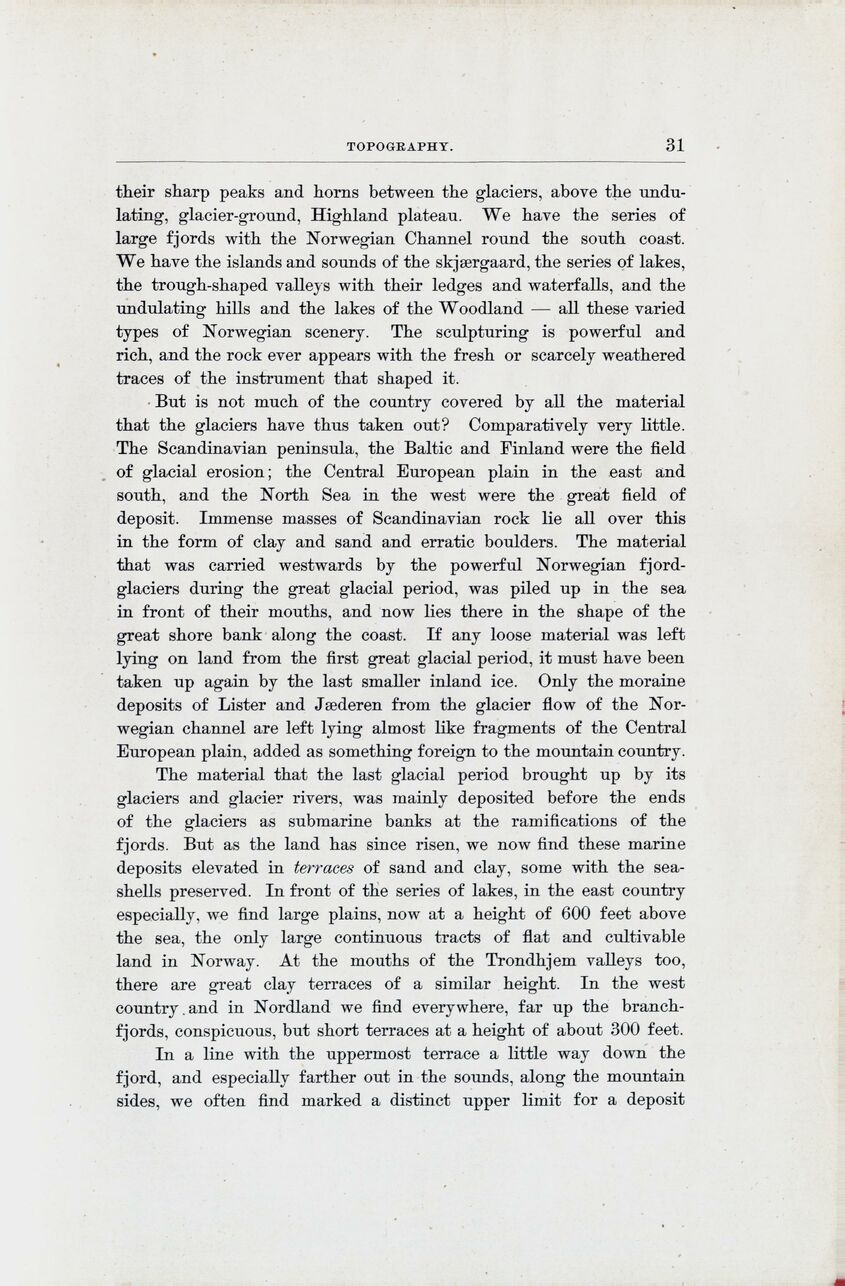
Full resolution (JPEG) - On this page / på denna sida - Topography, by Andr. M. Hansen

<< prev. page << föreg. sida << >> nästa sida >> next page >>
Below is the raw OCR text
from the above scanned image.
Do you see an error? Proofread the page now!
Här nedan syns maskintolkade texten från faksimilbilden ovan.
Ser du något fel? Korrekturläs sidan nu!
This page has been proofread at least once.
(diff)
(history)
Denna sida har korrekturlästs minst en gång.
(skillnad)
(historik)
their sharp peaks and horns between the glaciers, above the
undulating, glacier-ground, Highland plateau. We have the series of
large fjords with the Norwegian Channel round the south coast.
We have the islands and sounds of the skjærgaard, the series of lakes,
the trough-shaped valleys with their ledges and waterfalls, and the
undulating hills and the lakes of the Woodland — ail these varied
types of Norwegian scenery. The sculpturing is powerful and
rich, and the rock ever appears with the fresh or scarcely weathered
traces of the instrument that shaped it.
But is not much of the country covered bv all the material
that the glaciers have thus taken out? Comparatively very little.
The Scandinavian peninsula, the Baltic and Finland were the field
of glacial erosion; the Central European plain in the east and
south, and the North Sea in the west were the great field of
deposit. Immense masses of Scandinavian rock lie all over this
in the form of clay and sand and erratic boulders. The material
that was carried westwards by the powerful Norwegian
fjord-glaciers during the great glacial period, was piled up in the sea
in front of their mouths, and now lies there in the shape of the
great shore bank along the coast. If any loose material was left
lying on land from the first great glacial period, it must have been
taken up again by the last smaller inland ice. Only the moraine
deposits of Lister and Jæderen from the glacier flow of the
Norwegian channel are left lying almost like fragments of the Central
European plain, added as something foreign to the mountain country.
The material that the last glacial period brought up by its
glaciers and glacier rivers, was mainly deposited before the ends
of the glaciers as submarine banks at the ramifications of the
fjords. But as the land has since risen, we now find these marine
deposits elevated in terraces of sand and clay, some with the
seashells preserved. In front of the series of lakes, in the east country
especially, we find large plains, now at a height of 600 feet above
the sea, the only large continuous tracts of flat and cultivable
land in Norway. At the mouths of the Trondhjem valleys too,
there are great clay terraces of a similar height. In the west
country and in Nordland we find everywhere, far up the
branch-fjords, conspicuous, but short terraces at a height of about 300 feet.
In a line with the uppermost terrace a little way down the
fjord, and especially farther out in the sounds, along the mountain
sides, we often find marked a distinct upper limit for a deposit
<< prev. page << föreg. sida << >> nästa sida >> next page >>